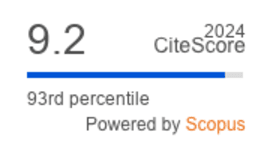Unveiling the Connection between Gut Microbiome and Polycystic Ovary Syndrome (PCOS)
DOI:
https://doi.org/10.36877/pmmb.a0000475Abstract
Polycystic ovary syndrome (PCOS) is a multifactorial endocrine metabolic disorder affecting up to one in ten women of reproductive age, with implications on fertility, metabolic health, and quality of life. Recent evidence has shown that gut microbiota dysbiosis plays a role in the PCOS pathophysiology. Based on the 25 articles extracted from PubMed, Ovid Medline, and Scopus (2020–2025), this review reveals that PCOS is consistently associated with reduced gut microbial α-diversity, distinct β-diversity clustering, and compositional shifts marked by depletion of beneficial taxa. These dysbiosis correlate with PCOS phenotypes such as insulin resistance, hyperandrogenism, dyslipidemia, and chronic inflammation via mechanisms involving impaired short-chain fatty acid production, disrupted bile acid metabolism, increased intestinal permeability, and immune-mediated dysregulation of the hypothalamic–pituitary–ovarian axis. Recognising the increasing role of the gut microbiome in PCOS highlights its systemic pathology and points towards the opportunities for microbiota-targeted therapies that address underlying pathophysiological mechanisms rather than symptomatic care alone.
Downloads
Published
How to Cite
Issue
Section
License
Copyright (c) 2025 Yun-Xuan Li, Ke-Yan Loo, Loh Teng-Hern Tan, Jodi Woan-Fei Law, Malarvili Selvaraja, Learn-Han Lee, Yatinesh Kumari, Vanassa Ratnasingam, Vengadesh Letchumanan

This work is licensed under a Creative Commons Attribution-NonCommercial 4.0 International License.
Author(s) shall retain the copyright of their work and grant the Journal/Publisher right for the first publication with the work simultaneously licensed under:
Creative Commons Attribution-NonCommercial 4.0 International (CC BY-NC 4.0). This license allows for the copying, distribution and transmission of the work, provided the correct attribution of the original creator is stated. Adaptation and remixing are also permitted.

This broad license intends to facilitate free access to, as well as the unrestricted reuse of, original works of all types for non-commercial purposes.
The author(s) permits HH Publisher to publish this article that has not been submitted elsewhere.



.png)

.jpg)
